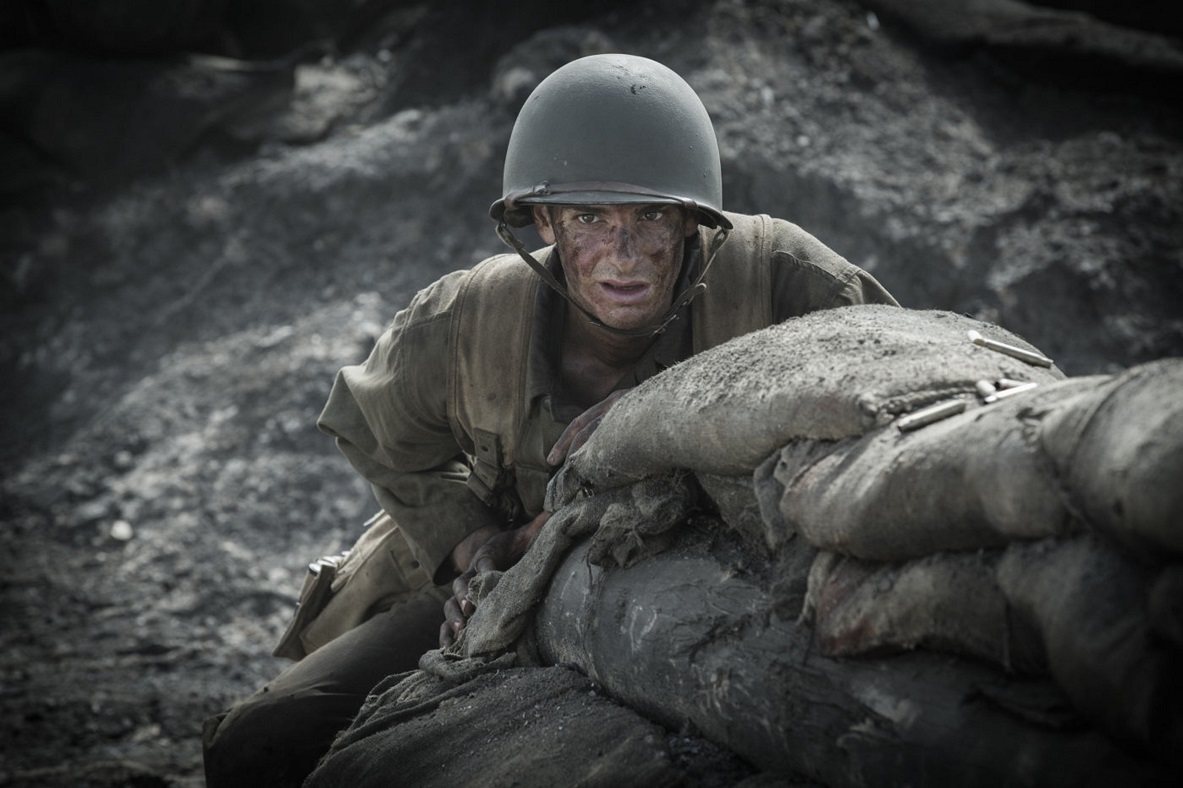Hacksaw Ridge: The true story of Desmond Doss
The real-life conscientious objector served in one of WWII's most brutal battles

War drama Hacksaw Ridge, the tale of a peace-loving soldier, has been nominated for six [a]Oscars, including Best Picture and Best Director. It has also revived the career of one-time Hollywood pariah Mel Gibson – but how does the movie compare to the real story?
The biographical drama tells the story of Desmond Doss, a Seventh Day Adventist Christian who served as a combat medic in the US Army during World War II but bucked protocol by refusing to carry or use a firearm or weapon of any kind.
Gibson directed the film, which stars Andrew Garfield as Doss, with supporting roles from Sam Worthington, Luke Bracey, Teresa Palmer, Hugo Weaving, Rachel Griffiths and Vince Vaughn.
The Week
Escape your echo chamber. Get the facts behind the news, plus analysis from multiple perspectives.

Sign up for The Week's Free Newsletters
From our morning news briefing to a weekly Good News Newsletter, get the best of The Week delivered directly to your inbox.
From our morning news briefing to a weekly Good News Newsletter, get the best of The Week delivered directly to your inbox.
Much of the plot is drawn from the real life of Doss, who died in 2006 aged 87. Screenwriters based the story on military records and footage of interviews with the soldier, though he was notably modest about his achievements.
What was Doss's background?
Desmond Doss was born in 1919 in Lynchburg, Virginia, the son of William Doss, a carpenter, and Bertha Doss. He was a highly religious child who was fascinated by an illustrated version of the Ten Commandments in his home, in particular the sixth commandment, "Thou shalt not kill", depicting Cain killing his brother Abel. His father, a World War I veteran, suffered alcohol and mental health problems. The scene in the movie where Desmond takes a gun from his father as he fights his mother is based on a real event in Doss's life. The actual fight, however, was between Doss's father and uncle. It prompted young Desmond to vow never to touch a gun again.
Why did Doss join the army?
A free daily email with the biggest news stories of the day – and the best features from TheWeek.com
Doss was drafted into the US Army in April 1942. His job in a shipyard (not depicted in the film) would have entitled him to a military deferment, but he chose to join up anyway. In The Conscientious Objector documentary, Doss claimed he felt it was an honour to serve his fellow countrymen and fight for religious freedom. He claimed that as a medic he could "be like Christ: saving life instead of taking life".
[[{"type":"media","view_mode":"content_original","fid":"107043","attributes":{"class":"media-image"}}]]
Did Doss meet his wife while giving blood?
The film depicts Desmond meeting his wife, Dorothy Schutte, while giving blood at a hospital. While Doss did walk from home to give blood after hearing a call for volunteers, he actually met Dorothy at church. She was not a nurse when they met, but later trained to be one to help the family, as Desmond's war injuries left him unable to work full-time.
Was Doss persecuted by the army and his fellow soldiers?
Doss began his basic army training with the 77th Division at Fort Jackson, but the army initially refused his request to be a medic and assigned him to a rifle company, hoping that peer pressure and intimidation would convince him to use a weapon. His fellow soldiers regarded him as a nuisance and a faker. As in the movie, in real life he was mocked, isolated and called names.
Where did Doss serve?
Private Doss's company was sent into one of the most brutal battlegrounds of WWII's Pacific conflict with Japan. The key battle, which takes up much of the latter half of the film, took place in April 1945 on Okinawa island's Maeda Escarpment, a sheer 400ft cliff, fortified with a deadly network of machine gun bunkers, tunnels and traps. The escarpment was nicknamed Hacksaw Ridge because of the perilously steep cliff and was considered the key to winning the battle of Okinawa.
What was Doss's achievement?
After heavy casualties, the Hacksaw Ridge mission was thought to be almost impossible, but when Doss's battalion was ordered to retreat, the medic refused to leave his fallen comrades behind. He repeatedly risked his own life to save the wounded. He estimated that he saved about 50 lives, while the military insisted it was closer to 100 – the movie settles on 75. In 1945, Doss became the first conscientious objector to receive the Medal of Honour, America's highest military honour, awarded for personal acts of valour above and beyond the call of duty.
-
 ‘Care fractures after birth’
‘Care fractures after birth’instant opinion Opinion, comment and editorials of the day
-
 Shots fired in the US-EU war over digital censorship
Shots fired in the US-EU war over digital censorshipIN THE SPOTLIGHT The Trump administration risks opening a dangerous new front in the battle of real-world consequences for online action
-
 What will the US economy look like in 2026?
What will the US economy look like in 2026?Today’s Big Question Wall Street is bullish, but uncertain